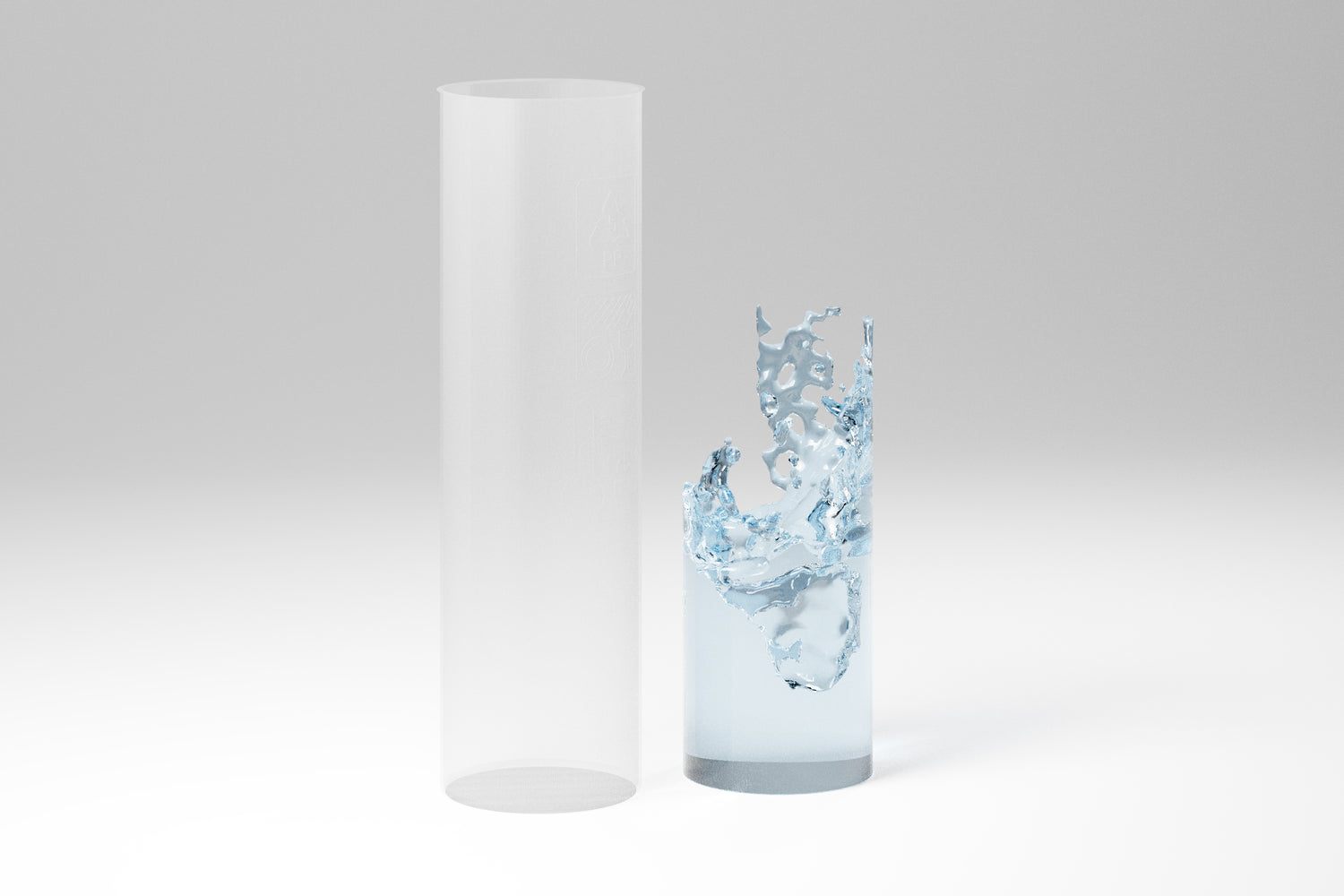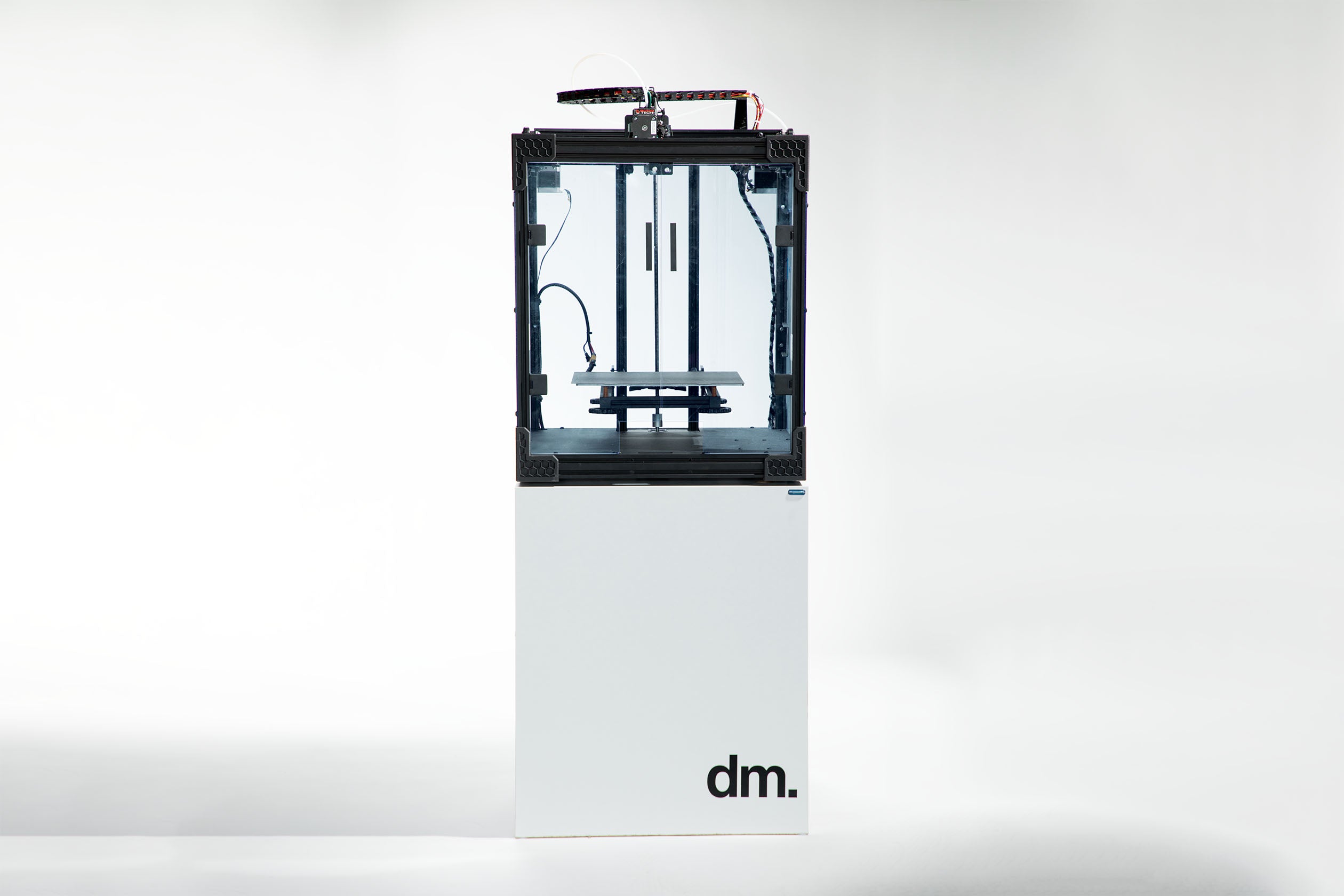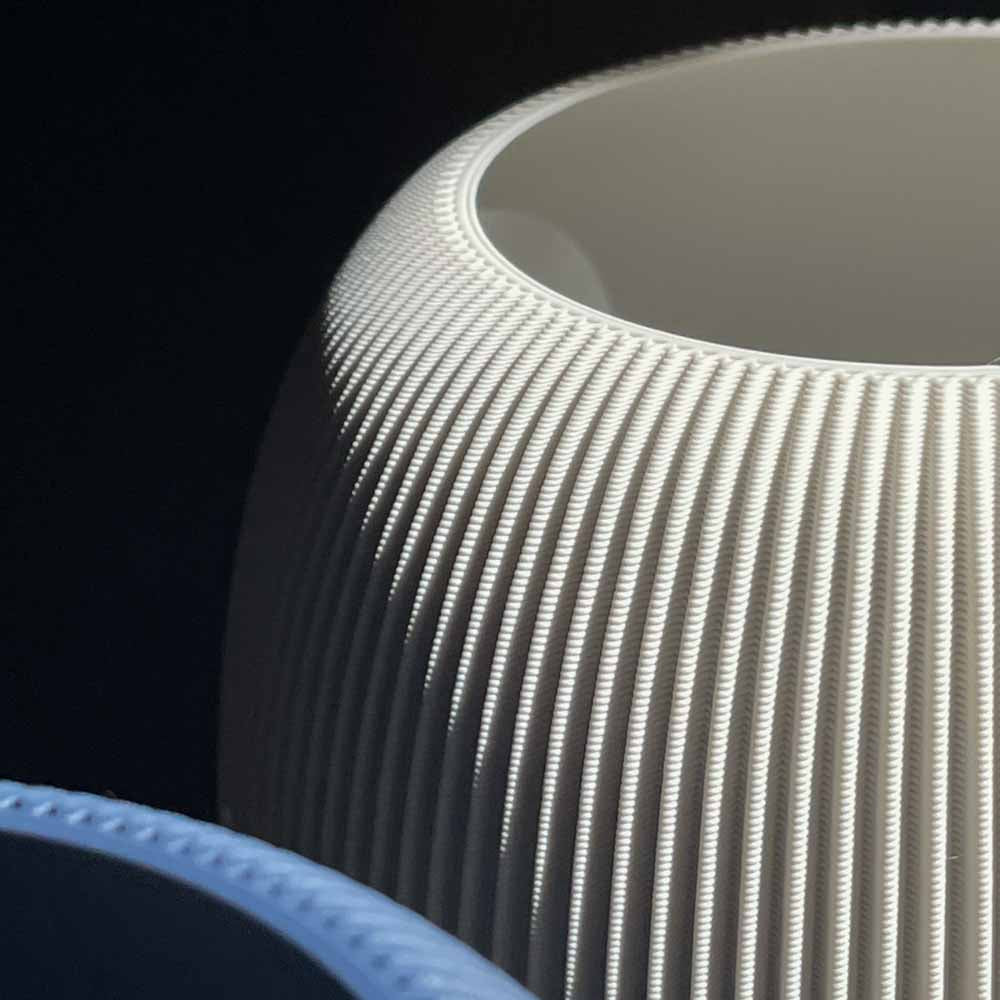As a manufacturer of decorative vases, one point was clear to us from the start: the vases have to be watertight, a property that is generally not given for 3D-printed objects, since when the layers fuse, there are often small ones that are not visible to the human eye Gaps appear through which the water can escape.
What are the options?
To solve this problem, we have considered several methods.
Since the water exits through minimal gaps between the layers, one option is to increase the material flow slightly and hope there are no more gaps. This method is easy to implement, but cumbersome to check, since each vase has to be tested individually and if there is a leak, it immediately becomes unusable.
Another possibility is to seal the vases from the inside. A large number of different materials can be used, for example wax or epoxy resin. This approach, when used correctly, provides reliable results. But this is exactly where the problem lies: The liquid for sealing the vases has to be distributed throughout the interior, which can become a complex task depending on the shape.
Additional complications arise when it comes to recycling, an issue that is of great importance to us as a manufacturer of plastic products. By sealing the vases with other fabrics, the PLA can no longer be recycled, resulting in the source materials being lost in disposal.
The final option to make a 3D printed waterproof vase without sacrificing recycling is to insert a waterproof object into the vase. Here, too, there are numerous different materials to choose from, some are printable (PP, PETG, PCTG, etc.), while others, such as glass or various metals, have to be purchased or manufactured in a complex manner.
Our solution to the problem
In our case, the printable plastics have significant advantages. What is essential for us is the flexibility with different shapes and sizes, which is maintained by our own, energy-saving production. In contrast, glass production is incredibly energy-intensive. Furthermore, one would be heavily dependent on the shapes offered, which could lead to significant limitations, especially when introducing new designs. Another advantage of plastic over glass is its low weight, which results in significantly less energy consumption during transport, both when buying and selling.
Polypropylene stands out from the selection of printable plastics, a material that is extremely present due to its use at Tupperware. It is elastic and stable in thin-walled form, can be printed waterproof, is dishwasher safe and has excellent recycling properties. A significant disadvantage, which polypropylene in particular brings with it, is the adhesion properties of the material, which make printing extremely challenging.
On the other hand, there are PETG and PCTG, which are extremely printable, but are brittle and not dishwasher-safe. So we chose polypropylene as it is the best material for our needs to be able to offer 3D printed waterproof vases.













Leave a comment
This site is protected by hCaptcha and the hCaptcha Privacy Policy and Terms of Service apply.